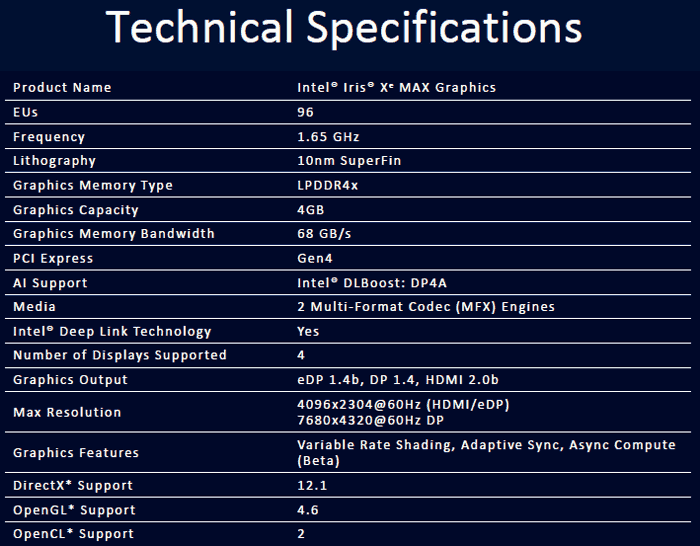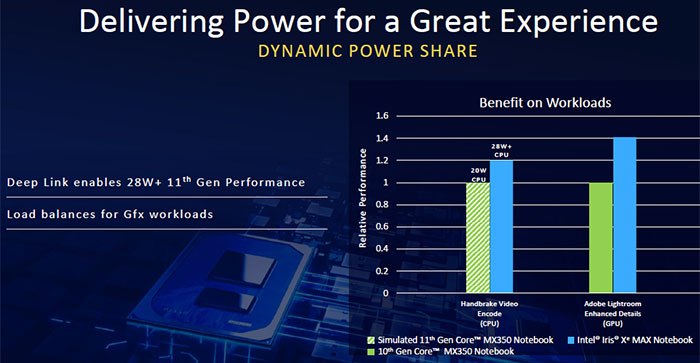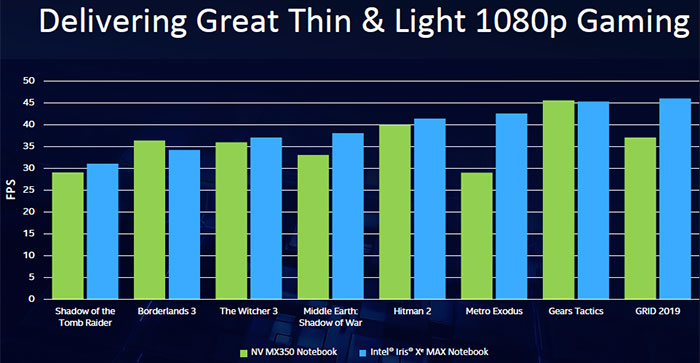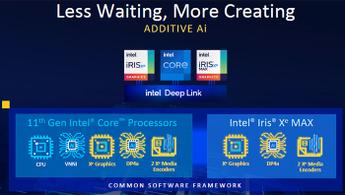On Saturday Intel took the wraps off its Intel Iris Xe MAX Graphics. We saw these discrete GPUs arriving in laptops earlier in October, but due to NDA manufacturers like Asus and Acer couldn't really describe the technology in any meaningful way with specs or test performance claims.
Intel Iris Xe MAX Graphics has now been confirmed to be based upon the same Xe-LP microarchitecture used for Intel Iris Xe graphics in 11th Gen Intel Core mobile processors. In its MAX configuration Intel is stuffing it inside thin and light laptops to address "a growing segment of creators who want more portability," writes VP and GM of Client XPU Product and Solutions at Intel, Roger Chandler. It will fit this bill thanks to both the GPU technology itself and Intel's platform-level innovation, specifically something called Deep Link.
Above: Mobile SoC vs discrete Xe-LP

Deep Link
Above you can see that Intel Iris Mobile SoCs are not that different to discrete Xe-LP, so having both in a conventional laptop would seem like a strange choice. However Intel's Deep Link tech is claimed to combine the GPUs to make the discrete GPU worthwhile, especially for mobile creators.
The official description of Deep Link is that it "aggregates multiple processing engines through a common software framework to bring new capabilities and better performance to PCs." Key to its functioning is that it allows applications to scale certain workloads across integrated and discrete graphics. For example, 'Additive AI' means one GPU can be used for inferencing and another for rendering. Another heralded use case is for 'Hyper Encoding' where multiple media streams can be encoded at once.
|
"up to 7x faster AI creation" |
Check out the slides below for some Additive AI and Hyper Encoding performance examples and benchmarks.
Another important tech in the mobile platforms Intel is pitching its Deep Linked integrated and discrete GPUs at is Dynamic Power Sharing. Intel has enabled this by shifting all the power and thermal resources to be dedicated to the CPU when the discrete graphics is idle, resulting in up to 20 per cent better CPU performance.

Deep Link is currently compatible with tools like Handbrake, OBS, XSpilt, and Huya. Tools from Blender, CyberLink, and Magix will also be made Deep Link aware in the coming weeks / months.

Gaming isn't the focus for Intel Iris Xe MAX Graphics, mobile gamers had better wait until the Xe-HPG parts hit mobile platforms. However, Intel still makes a worthwhile debut in thin and light 1080p PC gaming compared to the likes of the Nvidia GeForce MX 350 according to its own testing.

The first laptop designs packing Iris Xe MAX Graphics will be available this month.
















